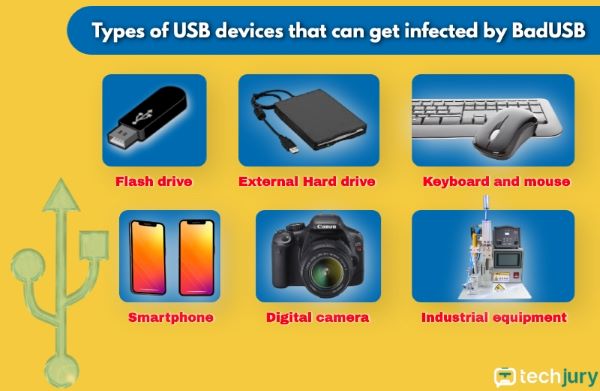

Updated · Feb 11, 2024
Updated · Nov 17, 2023
Girlie is an accomplished writer with an interest in technology and literature. With years of experi... | See full bio
Florence is a dedicated wordsmith on a mission to make technology-related topics easy-to-understand.... | See full bio
The continuous growth of cyber security threats marks today’s digital age. New attack vectors are constantly emerging, adding to the prevalence of these threats.
One such threat that has gained attention is BadUSB. This attack can compromise your devices' security, potentially leading to data breaches and other malicious activities.
In this article, learn about BadUSB and how to protect yourself from this threat.
|
Key Takeaways:
|
BadUSB refers to a security exploit that involves manipulating the firmware of a USB device to turn it into a malicious tool.
Traditionally, USB devices such as flash drives, keyboards, and others have been considered safe and trustworthy. However, a BadUSB attack can cause these devices to become harmful.
|
Good to know! The term “BadUSB” was presented by researchers Karsten Nohl and Jakob Lell at the Black Hat security conference. |
BadUSB works by exploiting the firmware embedded in USB devices. Attackers can program a fake USB to copy a keyboard or another USB device.
Once this device is plugged into a computer, the system recognizes it as a valid USB device and allows interaction. This interaction will prompt the fake USB device to install malware on a system.

An attacker can use many USB devices to infect a system. Knowing these devices can help you stay vigilant about what you insert into your computer.
|
BadUSB can affect various types of USB devices, ranging from storage devices like flash drives and external hard drives to input devices such as keyboards and others.
Here's each type of USB device that can get infected by BadUSB or bring infection to your device:

It is crucial to be cautious when connecting any USB device to your computer, primarily if it is obtained from an untrusted source or appears suspicious.
Understanding the risks and consequences of falling victim to a BadUSB attack can protect your device and data from malicious actors.
|
Note: Cyber crimes are on the rise. A lot of cyberattacks have evolved, and one way attackers do this is through BadUSB attacks. Read our articles about cybercrime statistics and cybersecurity statistics to know the exact figures. |
BadUSB attacks pose risks to the security and privacy of individuals and organizations.
Below are some examples of the potential harm caused by BadUSB:
The stolen data can be exploited for identity theft, financial fraud, or corporate espionage.
Additionally, keyloggers can be deployed to record keystrokes, capturing passwords, credit card details, and other confidential information.
|
Fun Fact! |
It can result in system instability, crashes, or rendering the device inoperable, leading to productivity loss and financial implications.
The versatility of BadUSB makes it a potent weapon for cybercriminals. Its ability for covert operations makes it a challenging threat to detect and mitigate effectively.
|
In a nutshell: BadUSB attacks pose significant risks to individuals and organizations. The versatility and covert nature of BadUSB make it a challenging threat to detect and mitigate effectively. |
To ensure the safety of your devices and protect them from the threat of BadUSB attacks, let’s delve into practical strategies and preventive measures you can employ.
Prevention is vital to safeguarding against BadUSB attacks. Adopting best practices can protect you from the potentially devastating consequences of a BadUSB attack.
Here are practical steps to reduce the risks:
Maintaining a proactive and vigilant approach to cybersecurity is essential in protecting your devices and data from USB attacks.
|
Good to know! |
BadUSB represents a severe and evolving cybersecurity threat. By understanding how BadUSB works and adopting preventive measures, you can protect yourself and your devices
Don't let a seemingly innocent USB device become the gateway to compromise — stay one step ahead and keep your devices and data secure.
Antivirus software primarily focuses on detecting and mitigating different types of malware and viruses. While it can help in some instances, traditional antivirus solutions may not always notice or prevent BadUSB attacks effectively.
Formatting a USB device may remove any existing data or files on the device, but it does not guarantee the removal of a BadUSB infection.
The research community and cybersecurity experts are actively developing countermeasures against BadUSB attacks.
This includes exploring techniques to detect and prevent such attacks, raising awareness, and educating users about the risks and preventive measures.
Your email address will not be published.
Updated · Feb 11, 2024
Updated · Feb 11, 2024
Updated · Feb 08, 2024
Updated · Feb 05, 2024



